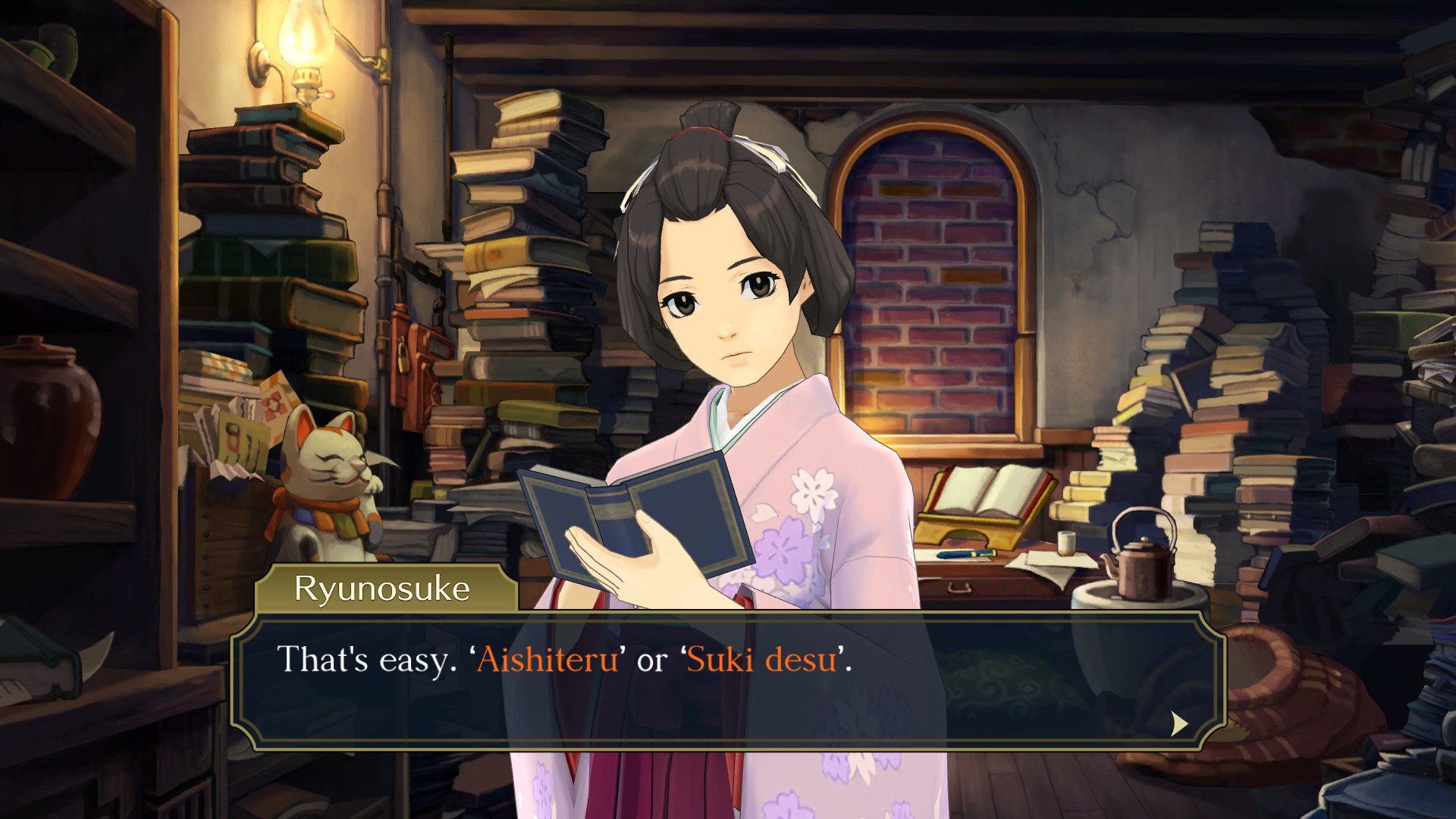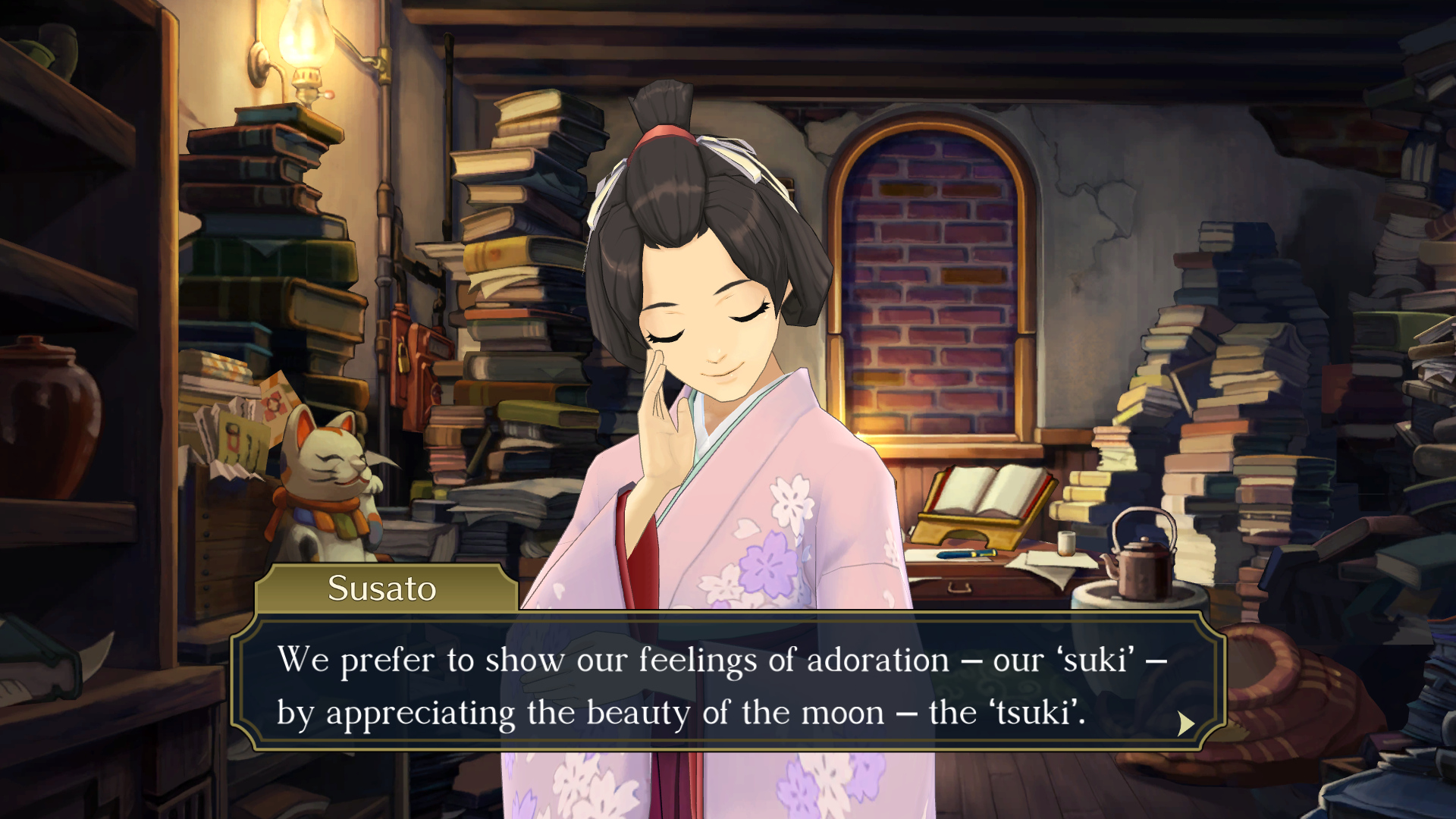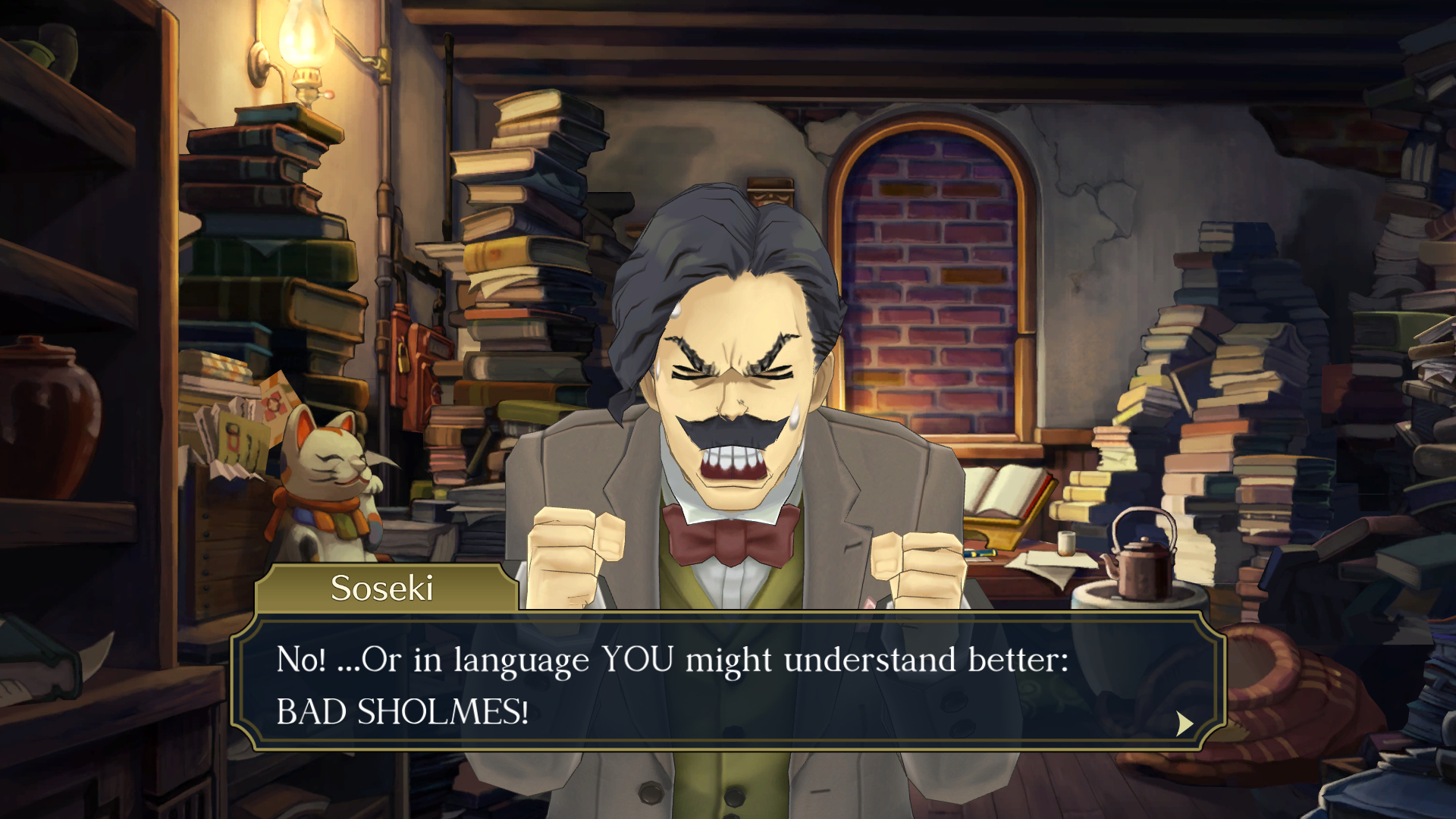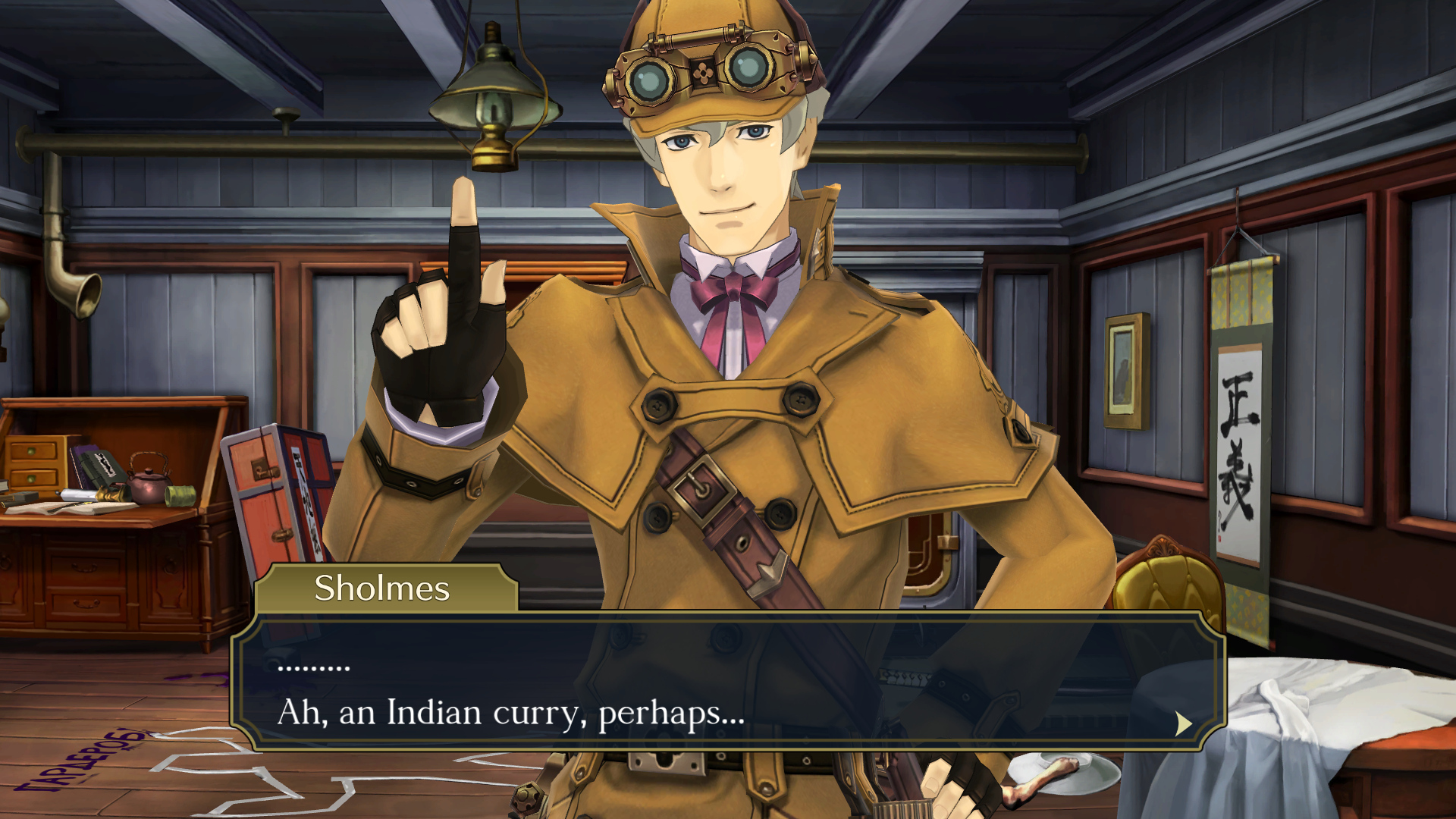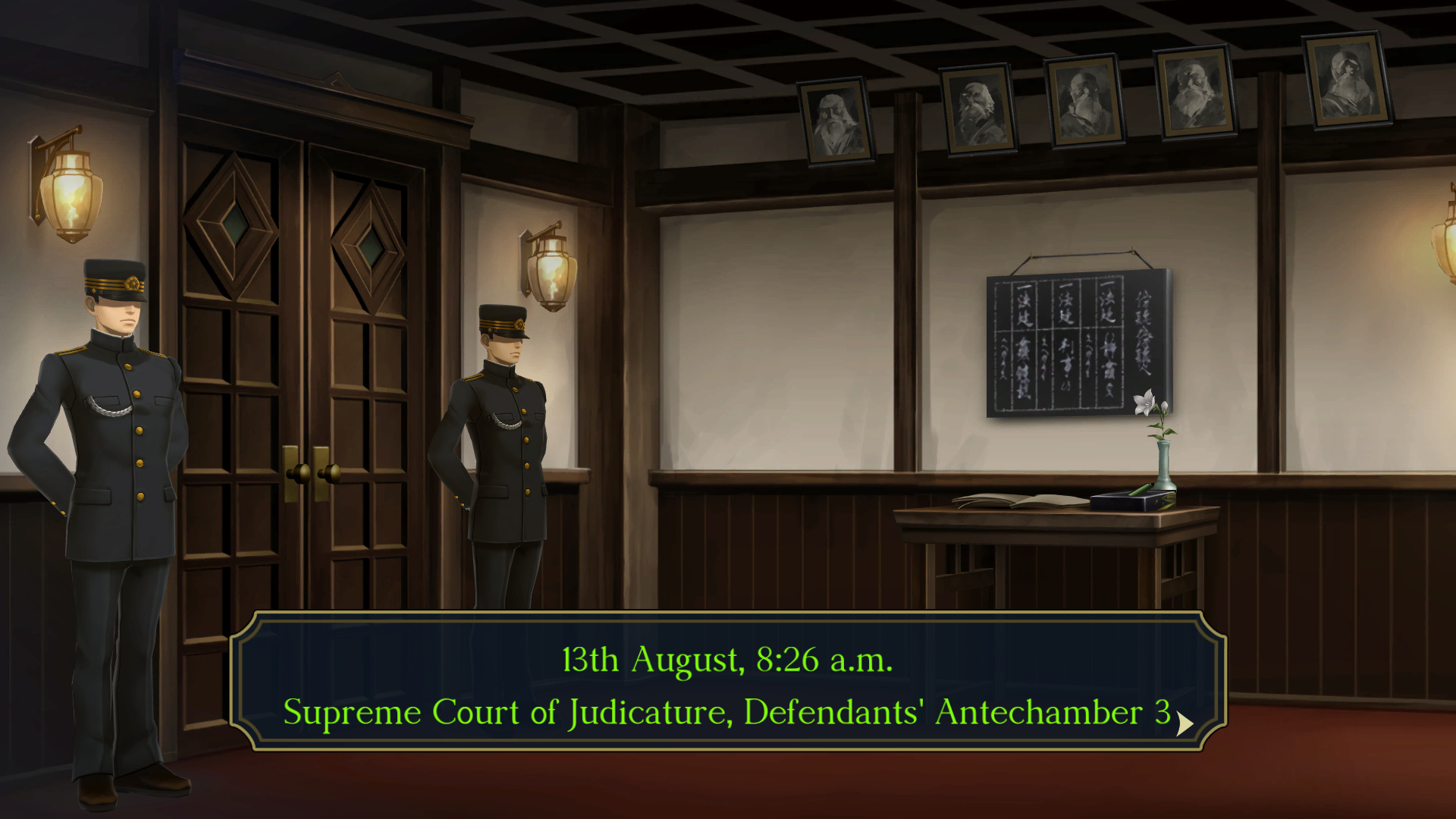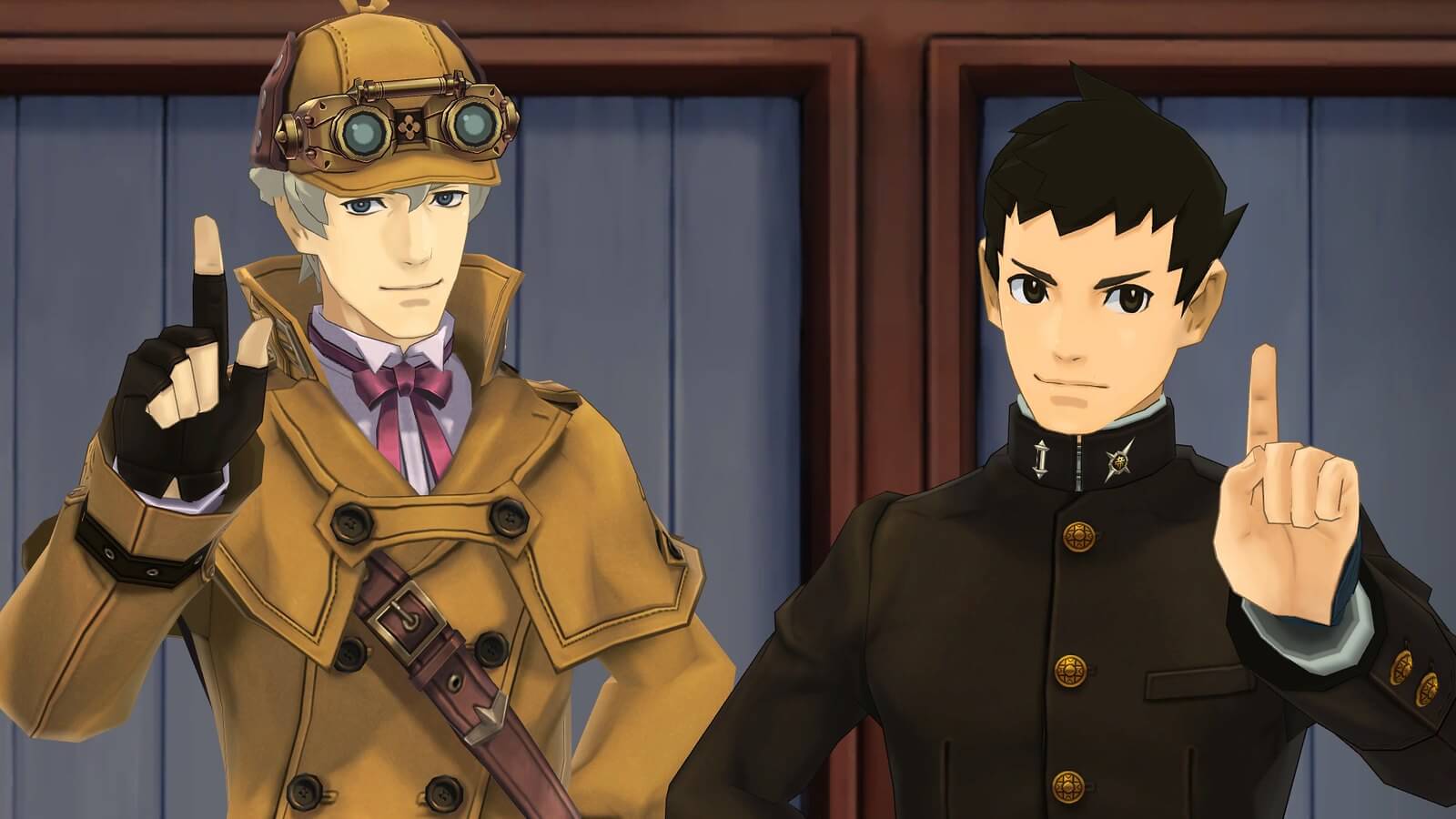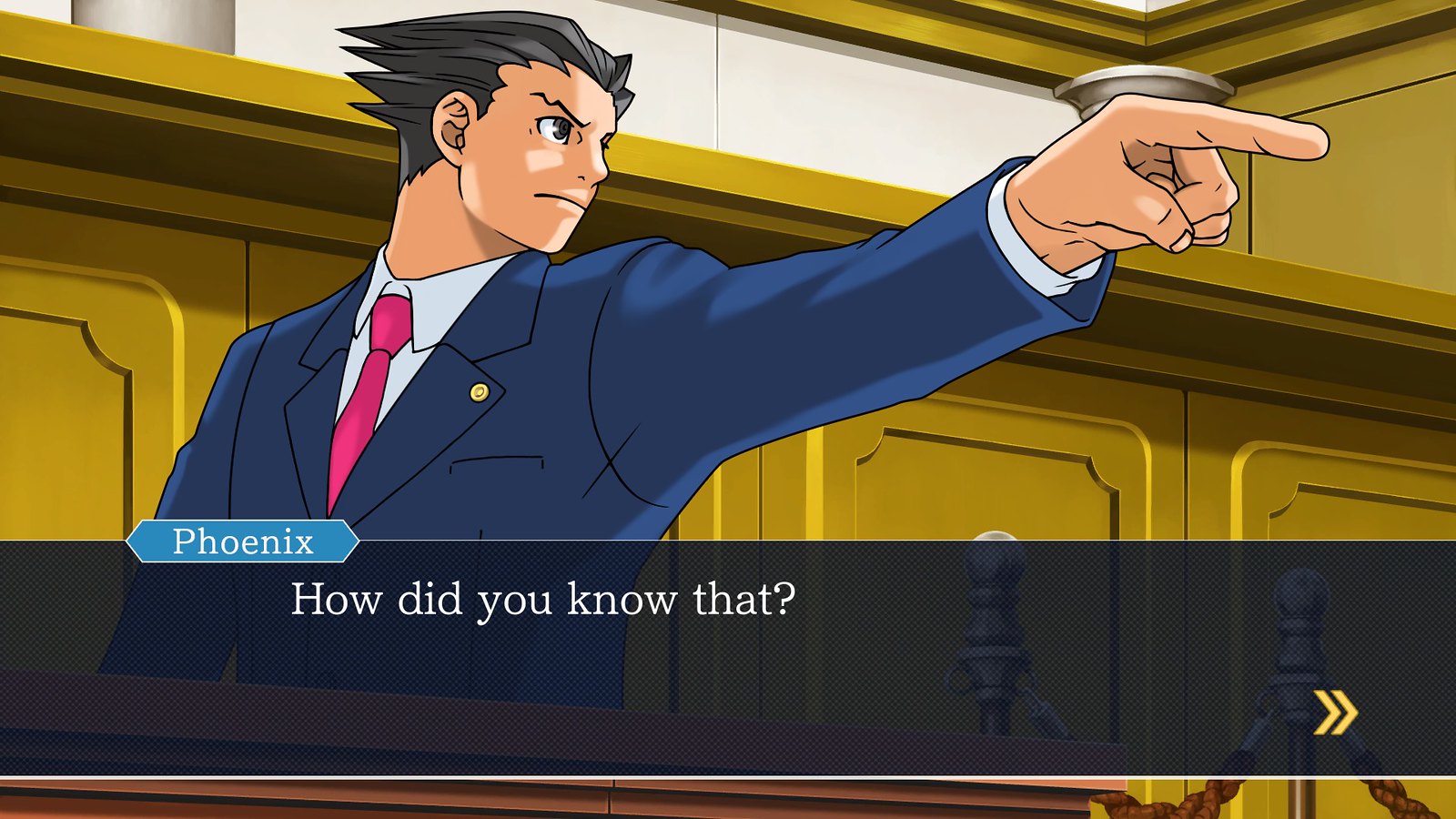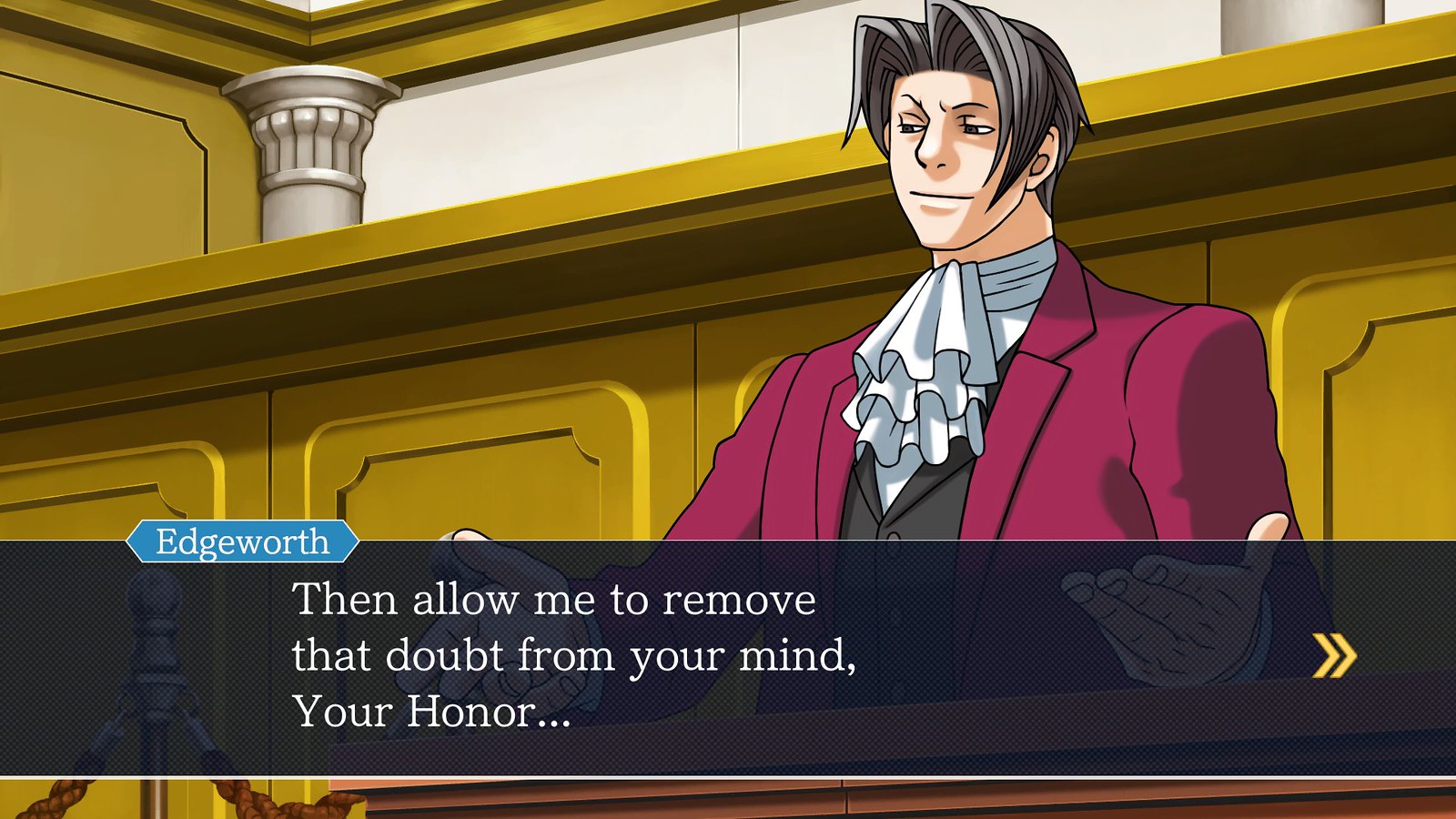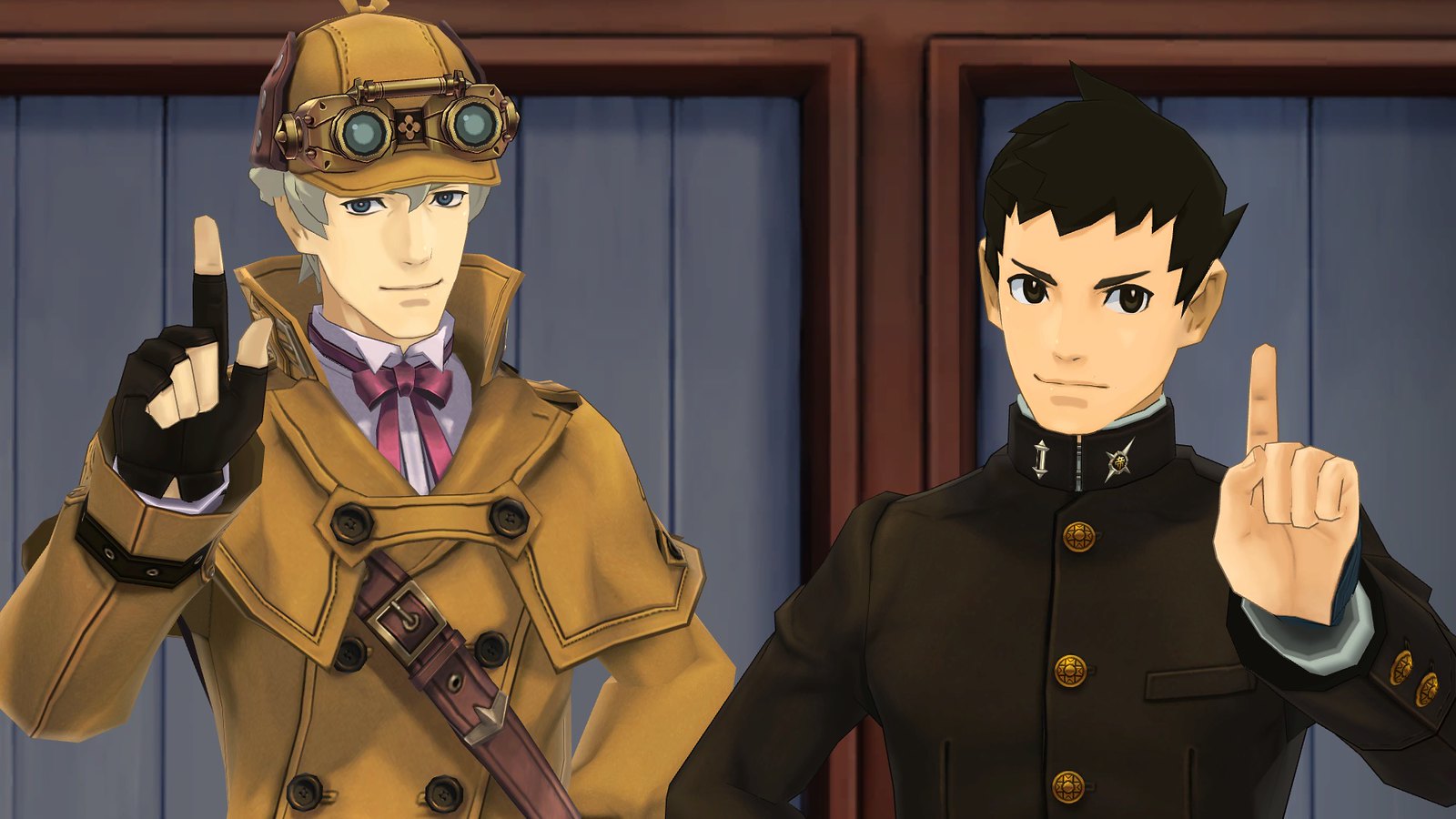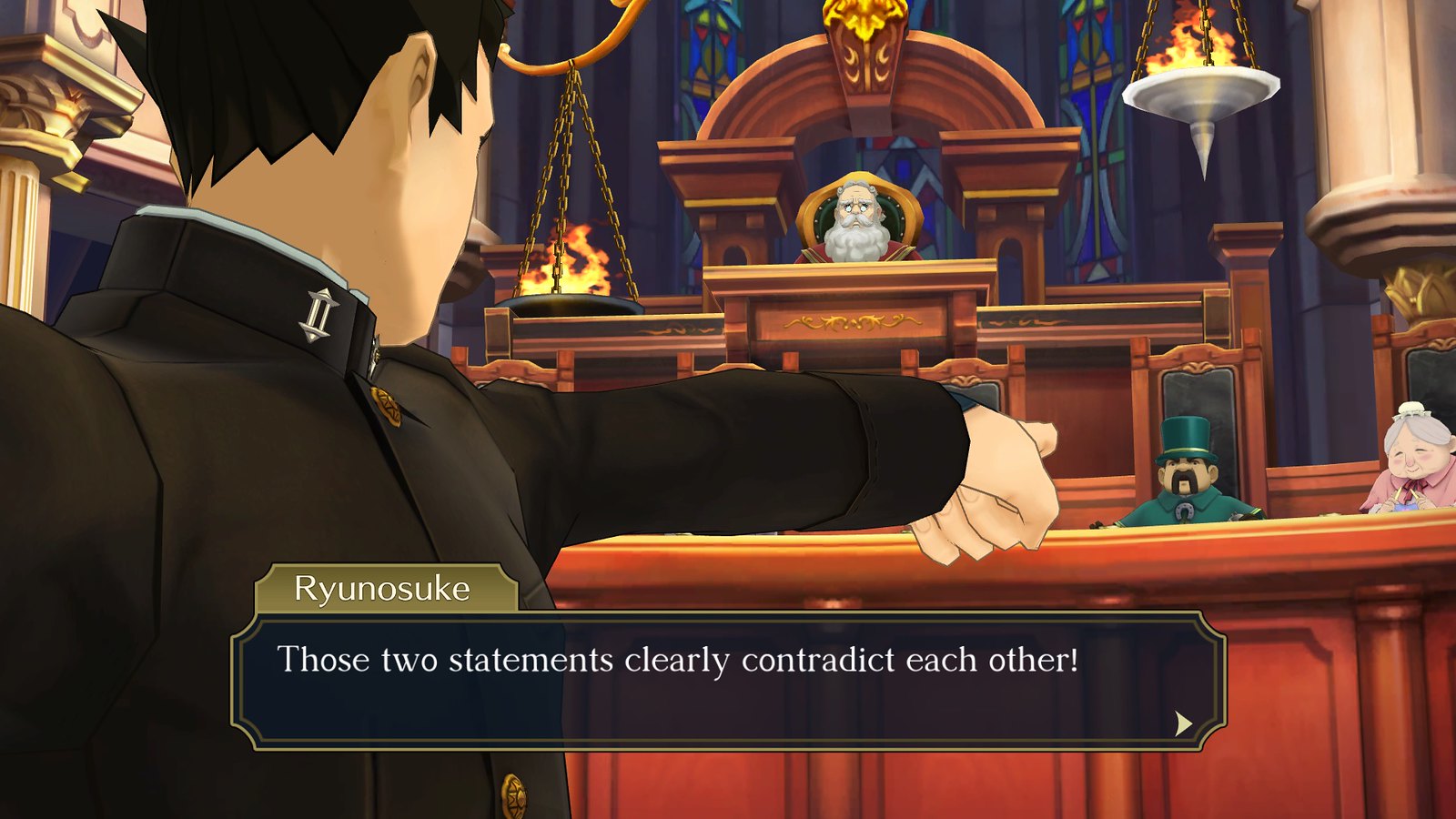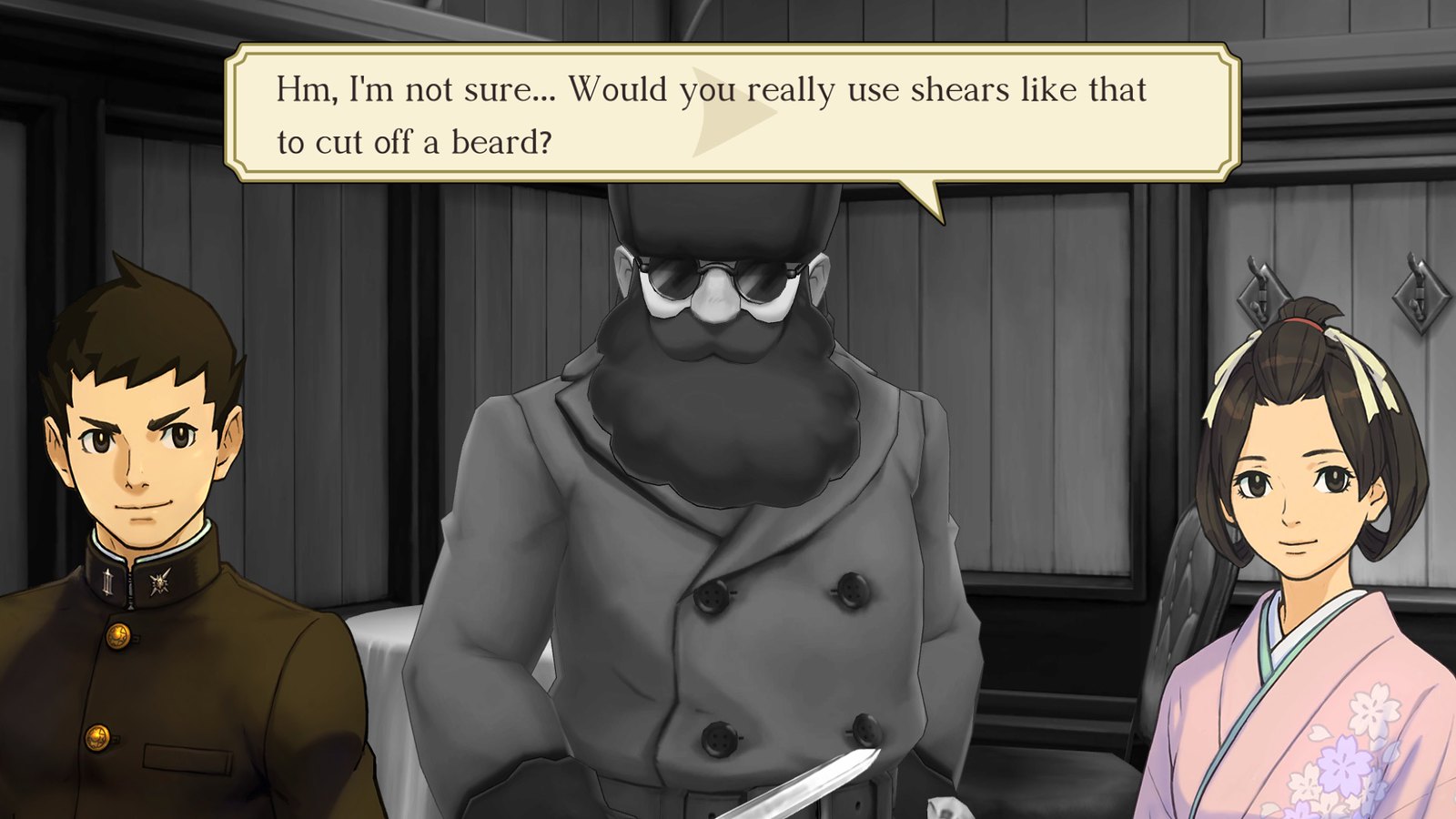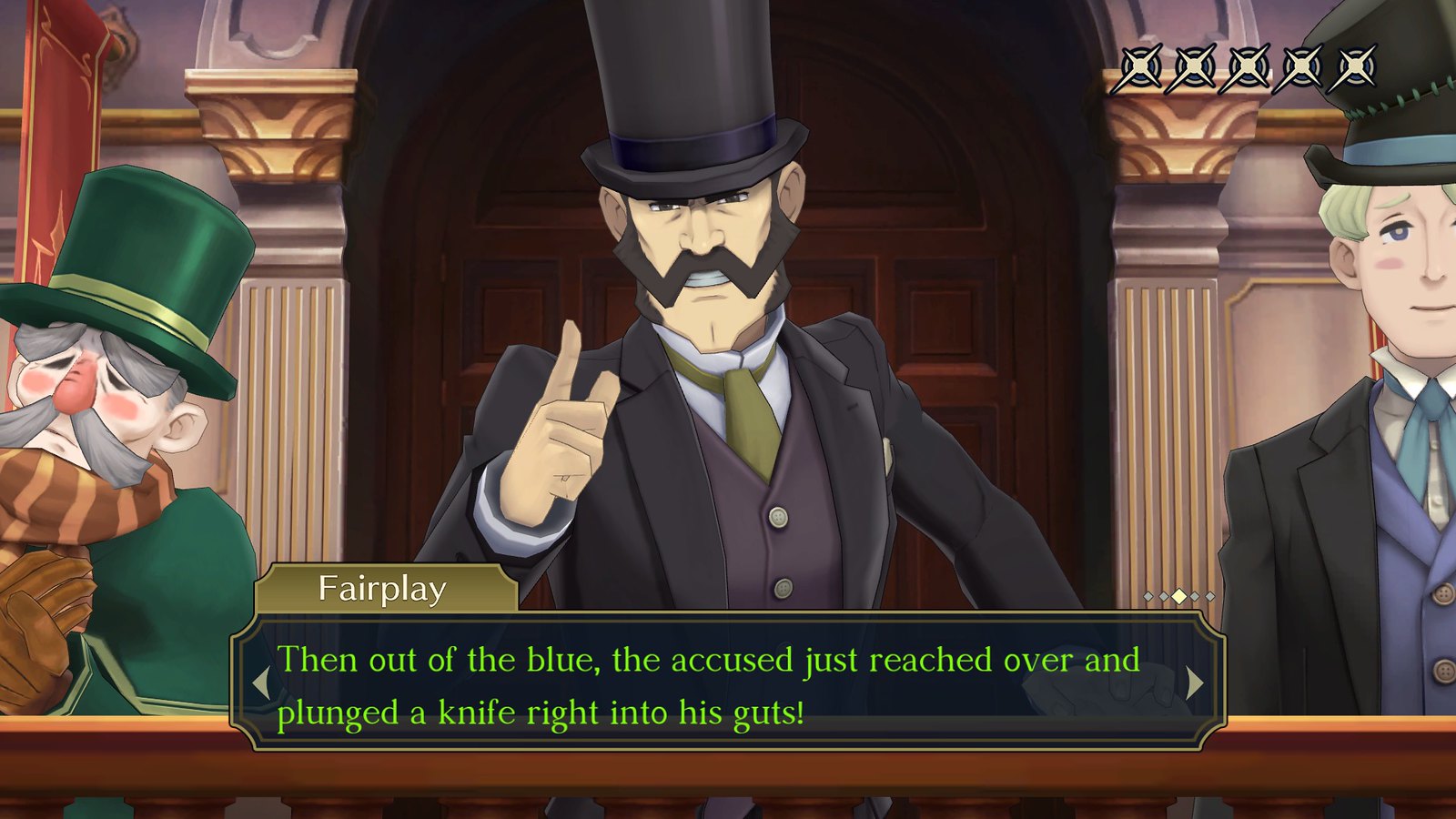Helloooo, PlayStation fans! It’s Janet Hsu, localisation director of The Great Ace Attorney Chronicles, here today to talk a little about the localisation of this long-awaited game that I’ve been wanting to share with you for so many years. Never in my wildest dreams did I think we’d have the privilege to bring out such a beautiful, HD version of this title to the PlayStation 4, but here we are! It’s truly been an honour for me.
My guiding philosophy for the localisation of this title was “Authentic, yet Accessible”, and I thought I’d expand on that a little more here. I’ve long thought that unlike medical or legal translation, translating and localising for video games is a sort of art: a balancing act of faithfulness to the literal words of the original text and correctly conveying the intentions behind them in a way that the audience can connect with. This also means each game – or any piece of entertainment media – has its own needs and limitations: What sort of game is it? Action? Adventure? Who is the intended audience and what should they be expected to know going in? etc. As with any form of art, what’s considered “best practices” also changes over time as they are based on contemporary cultural sensibilities. Therefore, the concept of “Authentic, yet Accessible” can mean different things in different contexts.
For example, I was reading an English translation of real life Japanese author Soseki Natsume’s I Am a Cat the other day and I was taken aback by one of its feline characters talking about his owner making “a penny a tail” and having collected “about half a crown” off of his hard work catching rats. But the British English translation I was reading is from 1972 and was primarily for a Western audience with no access to the internet. Therefore, it would seem that back then, even simple things like monetary values were localised to ensure that the reader could more readily grasp a sense of the amount of money being discussed, despite the story’s Japanese setting. And while this is something most translators wouldn’t do nowadays because best practices have changed over time, the funny thing is, even with the slight loss of authenticity, converting Japanese monetary values into British ones has held up remarkably well in one respect as a localisation choice: it made the English translation more accessible to me as a reader in the year 2021 – over 40 years later – because of my familiarity with Victorian monetary values (thanks, period dramas!). Having read Soseki’s original 1905 novel in Japanese as well, I can tell you I had no idea how much 5 sen or 1 yen 50 sen is worth off the top of my head, and neither does the average Japanese person it would seem. To me, this is a case of favouring accessibility over authenticity, which is certainly one way to assign weight to these two opposing elements. These sorts of balancing decisions are made all the time whenever a piece of work is translated, let alone localized.
But I have a feeling that even Soseki himself wouldn’t have minded these sorts of liberties being taken with his work. In fact, there’s a pretty famous story about our favourite moustached cat novelist and his own translation philosophy! In Episode 6 of the Escapades, we have this recounting of the well-known tale.
So what’s wrong with the answer Ryunosuke provided? Well, let’s have Professor Soseki explain his thinking to us.
And as Sholmes rightly points out, ‘Tsuki ga kirei desu ne’ is hardly what your textbook would tell you to translate ‘I love you’ as. Still, there is a very good reason.
“Bad Sholmes!” indeed! Because the underlying message Soseki was trying to convey is that in translating something, you have to take the cultural sensibilities of the target language into account as well. In this case, the more suitable “localisation” in his mind is the more oblique and poetic one that better aligns with the Japanese spirit of the time in its rendering of such a declaration. In doing so, he not only preserved the romantic nature of the phrase but also made it accessible in a way that his fellow countrymen would prefer. So you see, he too would have to have made such calculations between authenticity and accessibility in his translations over 100 years ago.
But wait! That’s not all there is to this particular in-game passage. So let’s buckle up for a little “locali-ception”!
You’ll notice that Ryunosuke’s answer was ‘“Aishiteiru” or “Suki desu”’, but as those of you who are already familiar with the legend of Soseki and the Beautiful Moon know, it’s often said that the translation he told his student to use is 我、君ヲ愛ス (Ware, kimi wo aisu). In fact, that’s what the original Japanese text of this scene said. So then, why did we even change that in the English if it’s meant to be a Japanese phrase? Well, this is because of two big factors:
1) To use a phrase that some people in our audience might possibly recognize thanks to anime or Basic Japanese 101 class as opposed to something no one would know unless they’ve had extensive Japanese training (or were a Soseki mega-fan)
2) To set up two big wordplays that are coming up by defining these words in advance for people who don’t know any Japanese at all
In my greed, I wanted to make sure that the phrase was still Japanese to keep it as authentic as possible. But with the direction the dialogue ultimately goes in, it wouldn’t have mattered what I wanted if I couldn’t figure out a way to translate this passage for people with no knowledge of Japanese; it was also important to me that they, too, could understand the little jab Sholmes takes at ‘suki’ and ‘tsuki’ by saying it’s merely a clever bit of wordplay, which was a joke in the original Japanese text. So I used Ryunosuke’s line as a way to set up what’s to come. As for the ‘aishiteiru’, well that comes up again a little bit later in the Escapade… (This entire episode was a nightmare of an exercise in localisation. I even had to sketch out how all the wordplay is linked and how to tackle them beforehand. Why did you do this to me Takumi-saaaan…?!? ><; )
But this also brings up an interesting dilemma I had this time around. The mainline games feature a character by the name of Phoenix Wright, but this new game’s protagonist didn’t even have an English name yet. What was I to do? On the one hand, I could’ve continued with the approach I’d used for the mainline games and gone the complete localisation route, completely favouring accessibility over authenticity, but instead, I chose to go in almost the complete opposite direction and favour authenticity over accessibility because the needs of the narrative willed it so. Here was a character whose identity and story is entirely grounded in his Japanese nationality. So while it was already my preference to keep him Japanese, the situation left me with no doubt in my mind that he had to be Ryunosuke Naruhodo.
With his name squared away, the next question to answer was, “Will he still be Phoenix’s ancestor?” to which my immediate response was, “Yes, of course!” Perhaps you’re wondering how I could reconcile the two characters’ backgrounds so easily, but as an Asian American, the answer couldn’t be plainer! Why couldn’t Phoenix have Japanese ancestry when he lives in such a multicultural country in the first place? In a way, in reconciling the American setting of the first game with the Japanese elements I had to keep in the subsequent games, I suppose the America of Ace Attorney has become something of a more idealized version of itself for me, and maybe there’s a part of me that wishes I could’ve grown up in such a place as well, as it reflects a bit of my lived experiences in its unique blend of East meets West.
As you can see from just these few examples, this is why I find it very hard to directly compare one localisation’s approach to another. Due to external factors surrounding the localisation itself such as the target language and culture or the era in which it’s being made, and the philosophy of the translator or localiser, each localisation is crafted in a way that best caters to its goals and needs. It’s the reason why things like the American versions (or localisations, if you will) of TVshows like The Office and Shameless exist, despite the originals being in English, and why modern translations of Shakespeare exists since time has changed the English language itself so much that his works have become inaccessible in some ways to the average modern reader.
But enough philosophy! Let’s take a look at a few more in-game examples!
| Japanese | English |
|---|---|
| ■ナルホド‥‥あの。ホームズさん。これ、なんですけど‥‥ | ■Ryunosuke Um, Mr Sholmes, what do you make of this? |
| ■ホームズしッ! 黙って。 | ■Sholmes Shh! Quiet! |
| ■ホームズ‥‥ボクはね。スイリに夢中になると、なにも目に入らなくなるのですよ。 | ■Sholmes When I’m ruminating in the course of my deductions,nothing must disturb my mind. |
| ■ナルホドあ‥‥す。スミマセンでした。 | ■Ryunosuke Oh… So sorry… |
| ■ホームズ‥‥‥‥‥‥‥‥‥‥カレーライス、かな。 | ■Sholmes………Ah, an Indian curry, perhaps… |
| ■ナルホド(‥‥ヒルごはんの献立を スイリしているみたいだな) | ■Ryunosuke (What’s he ruminating about?The lunch menu?) |
So this is an interesting example of localising intent while staying authentic to the story and character. In the Japanese, Sholmes guesses that perhaps they’ll be having curry rice for lunch. However, the translators flagged this as strange since curry rice is what we in the West would call a distinctly Japanese dish. It also seemed out of character for Sholmes to reference it so offhandedly as an Englishman. The thing is, curry rice has a bit of an interesting history: it was the British who first introduced Indian curry to Japan in the mid-19th century, but it didn’t become the popular dish it is today until the early 20th century after its formal adoption by the Japanese army and navy. That’s when it really took off and evolved into the altogether Japanese dish it is today. So when a Japanese player reads Sholmes saying he deduces that today’s lunch will be curry rice, the idea being presented is that he’s thinking of a non-Japanese food that’s commonly considered “Indian” in their minds. But without this cultural background, it’s hard to see why Sholmes would suddenly mention curry rice. That’s why in the English version, we’ve gone with Indian curry since that is the actual roots of the curry rice mentioned in the Japanese version, and fits better with the image of Sholmes as a British man to an English-speaking audience.
Here’s another interesting example of adding a little authenticity to the British setting for the English version.
| Japanese | English |
|---|---|
| 有罪、無罪、有罪、無罪、有罪、無罪、 有罪、無罪、有罪、無罪、有罪、無罪、 |
Nibble nobble guilty bobble, nibble not guilty out. Nibble nobble guilty bobble, nibble not guilty out. |
| ‥‥おそらく。『花うらない』のようなものではないでしょうか。 | …Perhaps it’s akin to fortune-telling with flower petals like people do back home? |
| (ドビンボー博士の運命が、1本の ’もろこし’にたくされるとは‥‥) | (So Professor Harebrayne’s fate is to be decided by a cob of corn…) |
Similar to “Eeny meeny miny moe”, this little ditty that the country girl sings as she typewriters her way through Colonel Cob is based on the English schoolyard counting song “Ibble obble”. The Japanese text simply has the girl repeating “guilty, not guilty” over and over, but with this simple addition, the translators added a little London flavour and turned her “guilty, not guilty” chant into an even more mysterious set of words to Ryunosuke and Susato’s ears, thus making their confused response all the more fitting. By the way, the flower fortune-telling game ‘花うらない’ (hana uranai) Susato mentions is actually remarkably similar to the “he loves me, he loves me not” flower game in the West, and just like its English counterpart, is said to have originated from the French game, “effeuiller la marguerite”.
On the topic of adding more authentic English flavour, the translators did an absolutely amazing job of adding touches that I, as an American, would never have been able to do no matter how familiar I am with all things British. From the outset, I’d told the translators that they could write as Britishly as they pleased, and I would be here to dial things like grammar and phrasings back as necessary to ensure accessibility to a wider international audience. So beyond just witty quips, you can bet there are pun runs and alliterations galore! On the flip side, for the episodes set in Japan, we tried to preserve the original Japanese flavour and I even went so far as to keep the graphics untouched. Instead, I asked the programmers to implement a special “subtitle system” for the Court Record so that when you mouse over pieces of text that are meant to be legible for a Japanese player, a translation will pop up on-screen as a subtitle. This is only possible thanks to being on current gen hardware as there definitely would not have been enough system memory to pull this off in previous versions.
We also use the honorific “-san” and the English titles Mr and Miss to differentiate when characters are thinking or speaking in Japanese versus English. In this way, I strove to bring out the turbulent “clash of cultures” feel of the Meiji era that was present in the Japanese version.
To bring out the period feel even further, we took cues from the Japanese text where complicated or period kanji characters were often used and then labelled with a modern reading above it in smaller furigana characters to keep the text accessible to the player.
Restaurants were literally “occidental food halls” (洋食堂/yoshokudo) but the kanji characters are labelled with a furigana reading that spells out the modern word “resutoran” (レストラン). Another thing the Japanese did was use more dated speaking patterns. One notable example is the way Ryunosuke says “I wonder” in Japanese. In modern Japanese, ~かしら (kashira) is a construction that pretty much only women or people who wanted to sound feminine will use, but back in the Meiji era, it was used by anyone and everyone. (One of our Japanese team members this time actually wrote this up as a bug because it’s such an unusual phrase for a male character to say in a modern game. Needless to say, it was a little surreal when it was me who had to school him by sending the bug back with “It’s period appropriate!” lol.) The game’s writer and director Mr Takumi talked about this once in an interview where he mentioned how he had to balance real Meiji era speak with what would be fun to read for a modern audience, ending up with a sort of “faux-Meiji” middle ground style.
In this way, the translators and I set out to construct our own “faux-Victorian” style by doing things like using mostly Victorian-era words and grammar, and “he or she” in place of singular “they” when a character’s identity was unknown (which turned out to be a lot harder to do because we were all so used to singular “they”!). Japanese names were also written in English order: first name, surname. This is because back then, this would’ve been the expected way to write a Japanese name in English. But what about the way we chose to spell their names?
Well, of course we used an internationally recognized Romanisation convention to represent Japanese sounds with Latin alphabet letters, but did you know that there are multiple “Romaji” systems? Many people throughout time have tried their hands at creating one, but the predominant system used today is known as the Hepburn system, developed by James Hepburn in the 1860’s. This is perhaps the one you learned in your Japanese class, but even within this system, there are a number of standardized deviations. We chose to go with a variant of Modified or Revised Hepburn for a number of reasons, but the four big ones were 1) conserving space, 2) increasing readability for people who are unfamiliar with Japanese words and how to pronounce them, 3) avoiding font support issues, and 4) preserving the intent of the original Japanese dev team who spelled the characters’ names in the same the way we’ve presented them in the final English version.
Perhaps those of you who know Japanese have looked at how Ryunosuke and Asogi are spelled and thought, “What happened to the extra ‘u’s that should be in there? Why were they dropped?” The answer is simply that in the variation we chose, we’re supposed to drop unpronounced vowels such as the ‘u’s in this case. This more streamlined style, which is used by the Japanese government itself for English information signage around Japan, makes it a ton easier for people who don’t know what that extra letter’s real function is, and increases the chance that they’ll pronounce it correctly on their first try. It also saves us a letter on-screen, where every usable pixel is a big deal. “But then why not use macrons and spell their names as Ryūnosuke and Asōgi instead?” is probably your next question, I’ll bet. This is where the technical side of things comes into play. Not every typeface comes with every glyph or letter that’s used in European languages. This is especially true of Asian language-based fonts. In fact, just to use the en-dash, the UI designer and I had to merge that glyph into the main text font from another typeset that was similar looking enough to pass muster. (You do NOT want to know how many fonts I had to look through on that day in search of one tiny dash… *shudder*) It’s also the reason why, ultimately, we had to go with “Esmeralda” instead of “Esméralda” for Madame Tusspells since one of the fancier fonts in the game doesn’t contain the é (e-acute) letter.
Speaking of UI troubles, there were a ton of other changes we had to make, not the least of which was to speed up the typewriter text here and there due to the sheer number of letters we needed to display. But increasing the speed of the text caused the tail end of the typewriter sound effects to get clipped, so I had new custom ones made for the English version. If you’ve got good ears and are familiar with the Japanese version, you just might be able to hear what I’m talking about when you play the game for yourself.
Phew, I talked about a lot today, but I’ve really only scratched the surface of what went into the localization of The Great Ace Attorney Chronicles. I hope I’ve shed some light on just a few of the choices we had to make and that you’ll check it out for yourself when it comes out on July 27, 2021 for PlayStation 4.
Until then!
Website: LINK



